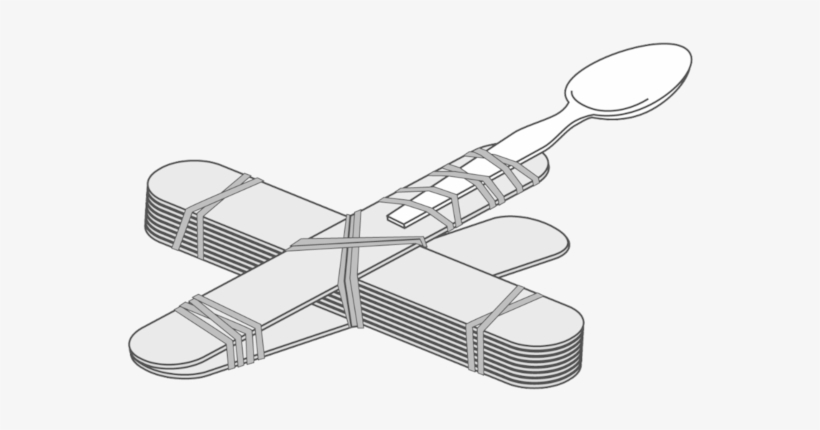Introduction
Energy cannot be created or destroyed – it can only be transformed from one form to another. Let’s explore how potential energy is converted into kinetic energy in action and discuss the factors that affect how much energy is transferred.
Inquiry Question:
How does the amount of stretch (potential energy) in a rubber band affect the distance an object is launched (kinetic energy)?
Hypothesis:
Before performing any experiment, think about what you expect to find based on your previous knowledge.
Use the structure below to write your hypothesis:
If (the rubber band is stretched/compressed… more/less…)
then (I think it will…),
because (give a scientific reason why).
Example:
Simple Situation
If the rubber band is very little,
then the object will go farther,
because less stretch means more stored energy to push it.
Complex situation
If the rubber band is stretched very little,
then the object will achieve a longer launch distance,
because lowering the elastic deformation raises the amount of stored potential energy, which transforms into greater kinetic energy during the release.
Objective:
Investigate the transformation of potential energy into kinetic energy by using a rubber band catapult to launch small objects and measure how different amounts of stretch affect the launch distance.
Materials
- 1 wooden ruler (30 cm) or wooden stick
- 1 strong rubber band
- 1 plastic spoon or craft stick
- Tape
- 1 pencil or pen (to act as a pivot)
- 10 small objects to launch (e.g., paper balls)
- Measuring tape or ruler
Procedure
- Build a simple catapult:
- Tape the spoon to one end of the ruler.
- Secure the rubber band tightly around the other end of the ruler.
- Place the ruler on a table with the pencil under the middle, acting like a lever pivot, more or less like the drawing.

- Place a small object in the spoon.
- Pull the spoon back to stretch the rubber band to a specific length (e.g., 5 cm, 10 cm, 15 cm), using a ruler to measure how far it’s pulled back.
- Release the spoon and launch the object.
- Measure the distance the object traveled using the measuring tape.
- Repeat each stretch level three times to get an average distance for each.
- Write the results.
Results:
Discussion Questions:
Answer the questions as a text in a school paper (I will choose 1 per group):
- What type of energy is stored when you pull back the spoon?
- What type of energy is present when the object is in motion?
- How did increasing the stretch length affect the distance traveled?
- Was all the stored energy transformed into motion? Why or why not?
- Can you think of any energy lost to other forms (e.g., heat, sound, friction)?
- How would changing the mass of the launched object affect the results?
- Where do you observe similar energy transformations in real life?
Conclusion:
Answer the questions as a text in the same school paper:
- Was your hypothesis correct? Why or why not?
- What did you learn about energy from this experiment?
- How can we apply this knowledge in real life?
